
How to Use ESP32-WROOM-32UE: Examples, Pinouts, and Specs
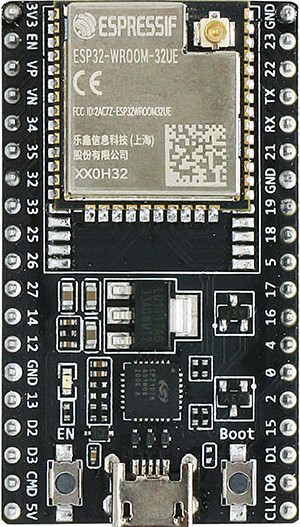
 Design with ESP32-WROOM-32UE in Cirkit Designer
Design with ESP32-WROOM-32UE in Cirkit DesignerIntroduction
The ESP32-WROOM-32UE is a high-performance Wi-Fi and Bluetooth microcontroller module manufactured by Espressif Systems. It features dual-core processing, making it ideal for a wide range of IoT (Internet of Things) applications. This module comes with an integrated external antenna connector, providing enhanced wireless performance and flexibility for deployment in various environments.
Explore Projects Built with ESP32-WROOM-32UE
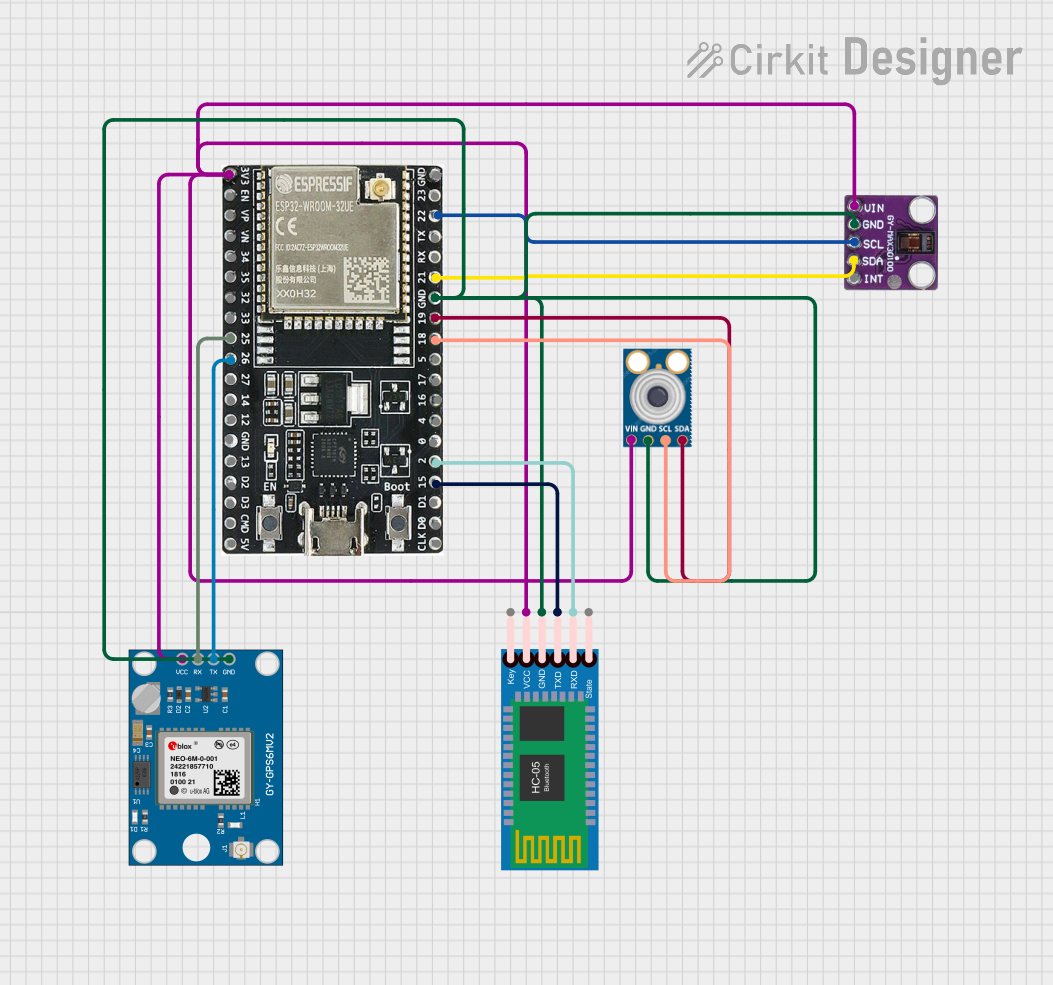
 Open Project in Cirkit Designer
Open Project in Cirkit Designer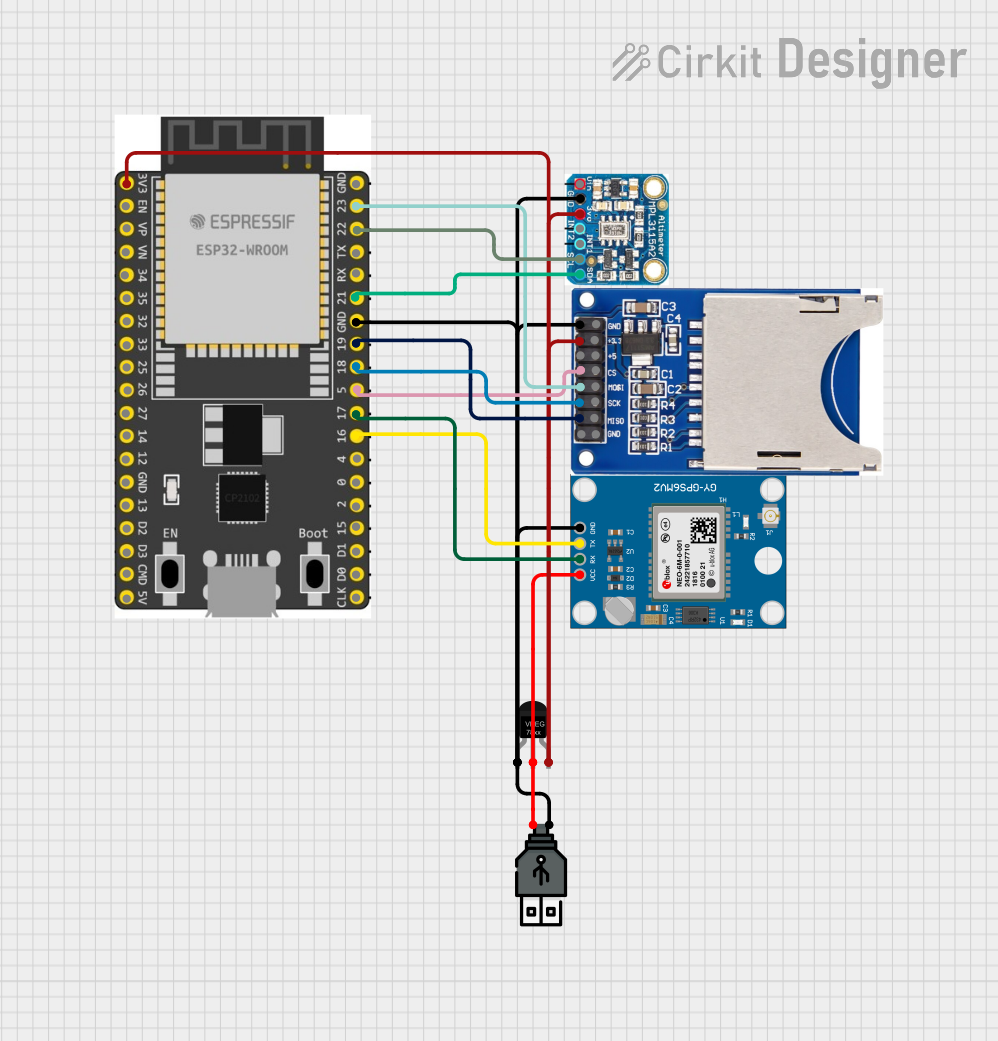
 Open Project in Cirkit Designer
Open Project in Cirkit Designer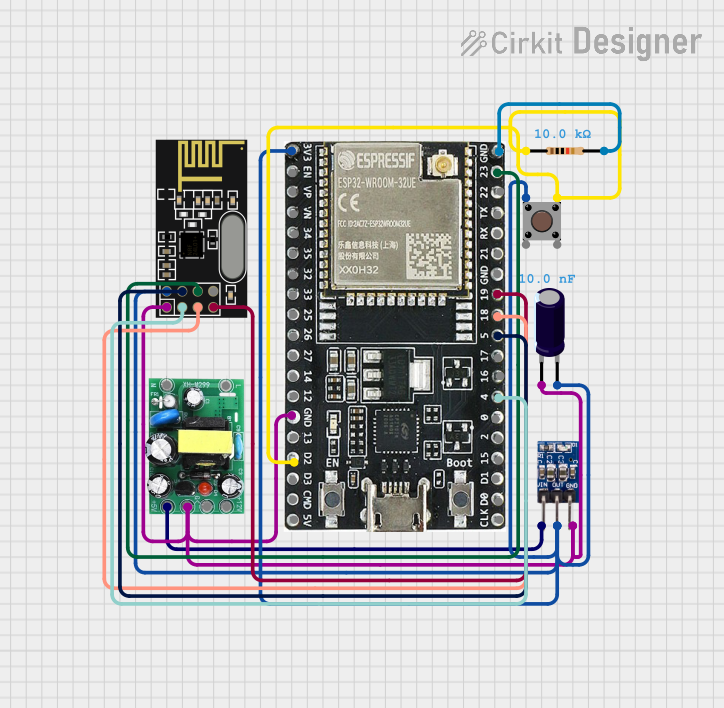
 Open Project in Cirkit Designer
Open Project in Cirkit Designer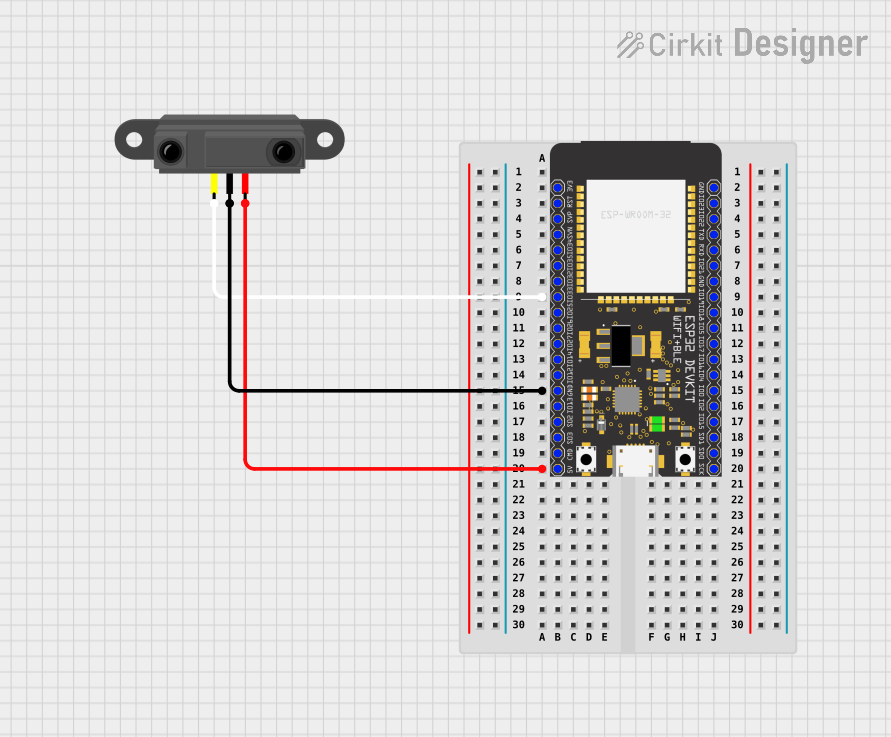
 Open Project in Cirkit Designer
Open Project in Cirkit DesignerExplore Projects Built with ESP32-WROOM-32UE

 Open Project in Cirkit Designer
Open Project in Cirkit Designer
 Open Project in Cirkit Designer
Open Project in Cirkit Designer
 Open Project in Cirkit Designer
Open Project in Cirkit Designer
 Open Project in Cirkit Designer
Open Project in Cirkit DesignerCommon Applications and Use Cases
- Smart home devices (e.g., smart lights, thermostats, and security systems)
- Industrial IoT (e.g., sensors, actuators, and monitoring systems)
- Wearable devices
- Wireless communication bridges
- Robotics and automation
- Prototyping and development of connected devices
Technical Specifications
The ESP32-WROOM-32UE is designed to deliver robust performance while maintaining low power consumption. Below are its key technical specifications:
| Parameter | Value |
|---|---|
| Microcontroller | ESP32-D0WDQ6 (dual-core Xtensa® 32-bit LX6 processor) |
| Clock Speed | Up to 240 MHz |
| Flash Memory | 4 MB (embedded) |
| RAM | 520 KB SRAM + 16 KB RTC SRAM |
| Wireless Connectivity | Wi-Fi 802.11 b/g/n (2.4 GHz), Bluetooth v4.2 BR/EDR and BLE |
| Operating Voltage | 3.0V to 3.6V |
| Power Consumption | 10 µA (deep sleep), 180 mA (active mode, Wi-Fi transmission) |
| Antenna | External antenna (U.FL connector) |
| GPIO Pins | 34 (multiplexed for various functions) |
| Interfaces | UART, SPI, I2C, I2S, PWM, ADC, DAC, CAN, Ethernet MAC, SDIO, and more |
| Operating Temperature | -40°C to +85°C |
| Dimensions | 18 mm x 25.5 mm x 3.1 mm |
| Certifications | FCC, CE, IC, MIC (Japan), KCC, and SRRC |
Pin Configuration and Descriptions
The ESP32-WROOM-32UE module has 38 pins. Below is a table describing the key pins:
| Pin Number | Pin Name | Function |
|---|---|---|
| 1 | EN | Enable pin. Pull high to enable the module, pull low to reset. |
| 2 | IO0 | GPIO0. Used to enter bootloader mode when pulled low during reset. |
| 3 | IO2 | GPIO2. Can be used as a general-purpose I/O or for specific functions. |
| 4 | IO4 | GPIO4. General-purpose I/O. |
| 5 | IO5 | GPIO5. General-purpose I/O. |
| 6 | IO12 | GPIO12. Can be used as an ADC, touch sensor, or general-purpose I/O. |
| 7 | IO13 | GPIO13. General-purpose I/O or PWM output. |
| 8 | IO14 | GPIO14. General-purpose I/O or PWM output. |
| 9 | IO15 | GPIO15. General-purpose I/O or PWM output. |
| 10 | IO16 | GPIO16. General-purpose I/O or UART RX. |
| 11 | IO17 | GPIO17. General-purpose I/O or UART TX. |
| 12 | GND | Ground. Connect to the ground of the power supply. |
| 13 | 3V3 | 3.3V power input. |
| 14 | TXD0 | UART0 transmit pin. |
| 15 | RXD0 | UART0 receive pin. |
| 16 | IO18 | GPIO18. General-purpose I/O or SPI clock (SCK). |
| 17 | IO19 | GPIO19. General-purpose I/O or SPI MISO. |
| 18 | IO21 | GPIO21. General-purpose I/O or I2C SDA. |
| 19 | IO22 | GPIO22. General-purpose I/O or I2C SCL. |
| 20 | IO23 | GPIO23. General-purpose I/O or SPI MOSI. |
For a complete pinout, refer to the official datasheet.
Usage Instructions
How to Use the ESP32-WROOM-32UE in a Circuit
- Power Supply: Provide a stable 3.3V power supply to the
3V3pin and connect theGNDpin to the ground of your circuit. - Boot Mode: To upload code, connect GPIO0 to GND and reset the module. After uploading, disconnect GPIO0 from GND.
- Programming: Use a USB-to-serial adapter to connect the module to your computer. Connect the
TXD0pin to the RX pin of the adapter and theRXD0pin to the TX pin of the adapter. - External Antenna: Attach an external antenna to the U.FL connector for optimal wireless performance.
- Peripherals: Connect sensors, actuators, or other peripherals to the GPIO pins. Use appropriate pull-up or pull-down resistors as needed.
Important Considerations and Best Practices
- Voltage Levels: Ensure all GPIO pins operate at 3.3V logic levels. Using higher voltages may damage the module.
- Antenna Placement: Place the external antenna away from metal objects or other sources of interference for optimal performance.
- Power Supply: Use a low-noise power supply to avoid interference with the module's wireless communication.
- Heat Management: If the module operates in high-temperature environments, ensure proper ventilation or heat dissipation.
Example Code for Arduino UNO
The ESP32-WROOM-32UE can be programmed using the Arduino IDE. Below is an example of a basic Wi-Fi connection:
#include <WiFi.h> // Include the Wi-Fi library for ESP32
// Replace with your network credentials
const char* ssid = "Your_SSID";
const char* password = "Your_PASSWORD";
void setup() {
Serial.begin(115200); // Initialize serial communication at 115200 baud
delay(1000); // Wait for a second to stabilize
Serial.println("Connecting to Wi-Fi...");
WiFi.begin(ssid, password); // Start Wi-Fi connection
// Wait until the ESP32 connects to Wi-Fi
while (WiFi.status() != WL_CONNECTED) {
delay(500);
Serial.print(".");
}
Serial.println("\nConnected to Wi-Fi!");
Serial.print("IP Address: ");
Serial.println(WiFi.localIP()); // Print the assigned IP address
}
void loop() {
// Add your main code here
}
Troubleshooting and FAQs
Common Issues and Solutions
Module Not Powering On:
- Ensure the
3V3pin is supplied with a stable 3.3V power source. - Check all connections, especially the ground.
- Ensure the
Cannot Upload Code:
- Verify that GPIO0 is connected to GND during the upload process.
- Ensure the correct COM port and board are selected in the Arduino IDE.
Wi-Fi Connection Fails:
- Double-check the SSID and password.
- Ensure the router is within range and supports 2.4 GHz Wi-Fi.
Unstable Operation:
- Use a decoupling capacitor (e.g., 10 µF) near the power pins to stabilize the power supply.
- Check for electromagnetic interference from nearby devices.
FAQs
Q: Can the ESP32-WROOM-32UE operate on 5V?
A: No, the module operates at 3.3V. Using 5V may damage the module.Q: How do I reset the module?
A: Pull theENpin low momentarily to reset the module.Q: Can I use the module without an external antenna?
A: No, the ESP32-WROOM-32UE requires an external antenna for wireless communication.Q: What is the maximum range of the Wi-Fi?
A: The range depends on the antenna and environment but typically reaches up to 100 meters in open space.
This concludes the documentation for the ESP32-WROOM-32UE. For further details, refer to the official datasheet and user manual provided by Espressif Systems.